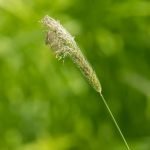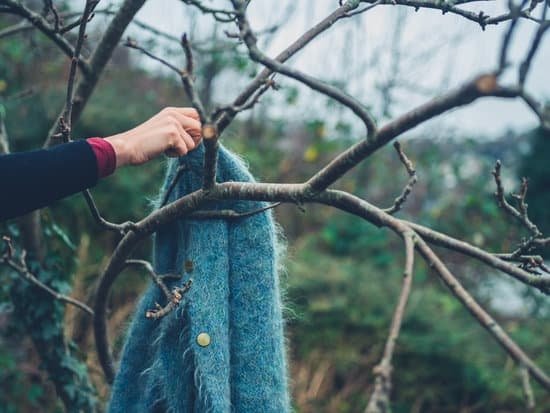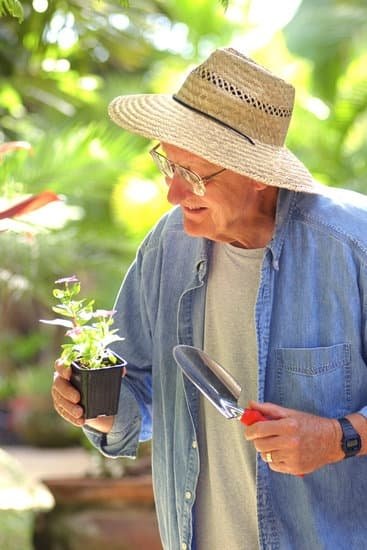Are you looking for gardening simple ideas to create a beautiful and flourishing garden? Whether you are a beginner or an experienced gardener, there are several easy and practical tips that can help you make the most of your outdoor space. From choosing the right plants to incorporating sustainable practices, this article will provide you with inspiration and guidance to cultivate a thriving garden.
Gardening offers a wide range of benefits, from improving mental health and reducing stress to providing fresh produce and beautifying your surroundings. As more people embrace the joy of gardening, it’s important to discover simple and effective ways to create and maintain a stunning garden that suits your lifestyle.
In this section, we will explore the many advantages of gardening and provide insights into how you can maximize the beauty and productivity of your garden with minimal effort. Whether you have limited space or want to create a low-maintenance garden design, we have got you covered with practical advice for achieving your gardening goals. Let’s dive in and discover the endless rewards of cultivating your own green oasis.
Choosing the Right Plants for Your Garden
When selecting the right plants for your garden, it’s essential to consider factors such as climate, soil type, and sunlight. As a beginner gardener, you’ll want to start with low-maintenance plants that are more forgiving and easy to grow. Here are some tips for choosing the right plants for your garden:
- Research: Take the time to research which plants thrive in your specific climate and soil conditions. Consider visiting local nurseries or botanical gardens to see what grows well in your area.
- Start with easy-to-grow plants: As a beginner, it’s best to start with plants that are known for their resilience and adaptability. Some examples of easy-to-grow plants include succulents, herbs like basil and mint, and hardy perennials like lavender and coneflowers.
- Consider your garden space: If you have limited space, consider planting compact varieties of vegetables and dwarf fruit trees. For those with larger spaces, explore a wide variety of plant options including shrubs, flowers, and trees.
In addition to considering these factors when choosing your plants, think about what you’d like to achieve with your garden. Are you looking to attract pollinators like bees and butterflies? Do you want to create a peaceful retreat with colorful blooms? By having a clear vision of what you want from your garden, you can make more informed choices when selecting the right plants.
Remember that gardening is an enjoyable learning experience. Don’t be afraid to experiment with different plant varieties to see what works best for you and your garden space. With time and patience, you’ll become more confident in understanding gardening simple ideas leading towards creating a beautiful outdoor space that brings joy and satisfaction.
Container Gardening
When it comes to gardening, space should never be a limitation. Even with a small balcony or patio, you can still create a beautiful and thriving garden. Container gardening allows you to maximize your limited space by using different types of containers to grow plants. Here are some tips for beginners looking to start container gardening:
- Choose the Right Containers: Select containers that have drainage holes to prevent waterlogging and use various sizes and shapes to add visual interest to your garden.
- Select the Right Plants: Consider the size of your containers and the amount of sunlight they receive when choosing plants. Herbs, succulents, and small vegetables like cherry tomatoes and lettuce are great options for container gardening.
- Ensure Proper Drainage and Watering: Use a well-draining soil mix and water your plants regularly, especially during hot weather.
In addition to planting in traditional pots, get creative with unconventional containers such as old tires, buckets, or even wooden crates. You can also utilize vertical space by hanging baskets or creating a trellis for climbing plants like peas or beans.
By incorporating these gardening simple ideas, you can transform any small space into a lush garden oasis. With some creativity and careful planning, container gardening can be an enjoyable and rewarding experience for beginners.
Simple DIY Garden Projects for a Personalized Touch
Adding a personal touch to your garden can be a rewarding and fulfilling experience. Simple DIY garden projects not only add individuality to your outdoor space but also provide an opportunity for creativity and self-expression. From handmade garden ornaments to customized plant markers, there are numerous ways to personalize your garden and make it truly unique.
DIY Garden Ornaments
Creating your own garden ornaments is a fun and easy way to add charm and personality to your outdoor space. Whether you choose to make decorative stepping stones, hand-painted birdhouses, or whimsical wind chimes, DIY garden ornaments allow you to showcase your creativity while enhancing the visual appeal of your garden.
Customized Plant Markers
For those who love to grow their own fruits, vegetables, and herbs, customized plant markers are a great way to add a personalized touch to your garden. You can get creative with materials such as wooden sticks, painted rocks, or even repurposed household items to label and identify different plants in your garden. Not only do these DIY plant markers serve a practical purpose, but they also bring a playful and artistic element to the overall design of your garden.
Upcycled Garden Decor
Another budget-friendly option for adding a personalized touch to your garden is by upcycling household items into unique and eye-catching decor pieces. From old tires turned into colorful planters to repurposed pallets transformed into vertical gardens, the possibilities for upcycled garden decor are endless. Not only does this approach promote sustainability and eco-friendliness in gardening practices, but it also adds character and individuality to your outdoor space.
Incorporating simple DIY garden projects into your gardening routine can enhance the beauty of your outdoor space while allowing you to put your personal stamp on it. Whether you choose to make handmade ornaments, create custom plant markers, or upcycle everyday items for unique decor pieces, these projects are sure to bring joy and satisfaction as you witness the personalized transformation of your garden.
Low-Maintenance Garden Design Ideas
Designing a low-maintenance garden can be a great way to enjoy the beauty of nature without the constant upkeep that traditional gardens require. By choosing the right plants and implementing smart design techniques, you can create a stunning outdoor space that practically takes care of itself. Here are some simple ideas for designing a low-maintenance garden that will allow you to maximize beauty with minimal effort.
Strategic Plant Selection
When creating a low-maintenance garden, choosing the right plants is key. Opt for native and drought-tolerant species that are well-suited to your climate and soil conditions. These plants require less water and maintenance, making them perfect for a low-maintenance garden. Additionally, consider incorporating perennial plants, shrubs, and trees, as they often require less care than annuals and biennials.
Landscape Design Techniques
Incorporating practical landscape design techniques can also help minimize the maintenance required in your garden. Utilize mulch to suppress weeds, retain moisture, and prevent soil erosion. Grouping plants with similar watering and sunlight needs together can also simplify maintenance tasks. Additionally, consider incorporating hardscaping elements such as pathways and decorative rock features to add visual interest while reducing the need for regular upkeep.
Efficient Irrigation Systems
Implementing an efficient irrigation system can significantly reduce the amount of time and effort required to maintain your garden. Drip irrigation or soaker hoses deliver water directly to plant roots, minimizing water waste and reducing the need for frequent watering. Consider installing rain barrels to collect and store rainwater for use in your garden, further decreasing reliance on traditional watering methods.
By combining strategic plant selection, landscape design techniques, and efficient irrigation systems, you can create a visually stunning low-maintenance garden that requires minimal effort to maintain. Embracing these gardening simple ideas will allow you to spend more time enjoying your outdoor space and less time tending to it.
Incorporating Sustainable Practices in Your Garden
When it comes to gardening, sustainability is not just a trend but a responsibility. Taking care of the environment while tending to your garden is essential for the health of both your plants and the planet. There are several gardening simple ideas that you can implement to make your garden more sustainable.
One of the easiest ways to incorporate sustainable practices in your garden is by composting. Instead of throwing away organic waste, such as fruit and vegetable scraps, grass clippings, and leaves, create a compost pile or use a compost bin. This not only reduces the amount of waste that ends up in landfills but also provides nutrient-rich soil for your garden.
Another simple idea for sustainable gardening is using rainwater instead of tap water to hydrate your plants. By installing a rain barrel or two in your garden, you can collect rainwater and use it to water your plants during dry spells. This conserves water and reduces your carbon footprint by decreasing the amount of energy required to pump and treat drinking water.
Furthermore, consider using natural pest control methods instead of chemical pesticides. For example, you can attract beneficial insects like ladybugs and lacewings, which feed on harmful pests, by planting native flowers in your garden. Additionally, practicing crop rotation and companion planting can help prevent plant diseases and minimize the need for synthetic chemicals. By implementing these sustainable practices, you can create a more environmentally friendly and harmonious garden space.
| Gardening Simple Idea | Benefit |
|---|---|
| Composting organic waste | Reduces landfill waste and provides nutrient-rich soil |
| Using rainwater for hydration | Conserves water and reduces carbon footprint |
| Natural pest control methods | Minimizes need for chemical pesticides |
Garden Maintenance Made Easy
Gardening is a wonderful and rewarding activity, but maintaining a garden to keep it looking its best can sometimes be overwhelming. However, there are several gardening simple ideas that can help make garden maintenance easy and enjoyable.
One simple idea for garden maintenance is to create a regular schedule for tasks such as weeding, watering, and pruning. By setting aside specific time each week to attend to these tasks, you can prevent them from piling up and becoming daunting. Additionally, using mulch in your garden can help reduce the growth of weeds and retain moisture in the soil, reducing the need for frequent weeding and watering.
Another great way to keep your garden looking its best with minimal effort is to choose low-maintenance plants. Native plants and drought-tolerant varieties are often more resilient and require less care compared to other plants. Choosing the right plants for your garden can make a big difference in how much time and effort you need to invest in maintaining it.
Incorporating sustainable practices into your garden maintenance routine can also help reduce effort while benefiting the environment. This could include using organic fertilizers and pesticides, composting kitchen scraps for nutrient-rich soil, or collecting rainwater for irrigation. By implementing these gardening simple ideas for maintenance, you can ensure that your garden remains beautiful without feeling overwhelmed by the upkeep.
| Garden Maintenance Tips | Description |
|---|---|
| Create a maintenance schedule | Set aside specific time each week for weeding, watering, pruning, etc. |
| Choose low-maintenance plants | Opt for native or drought-tolerant varieties that require less care. |
| Incorporate sustainable practices | Use organic fertilizers, composting, rainwater collection to reduce effort and benefit the environment. |
Harvesting and Using Your Homegrown Produce
One of the most rewarding aspects of gardening is being able to harvest and use the produce that you have grown with your own hands. Whether it’s fresh vegetables, fruits, or herbs, there are countless simple and delicious recipes that can be made with homegrown produce. From salads and smoothies to homemade sauces and preserves, the possibilities are endless when it comes to using your garden’s bounty in the kitchen.
When it comes to harvesting your homegrown produce, timing is key. Different fruits and vegetables have different optimal times for picking, so it’s important to do a little research on each type of plant in your garden.
For example, tomatoes should be harvested when they are fully colored but still firm, while leafy greens like lettuce and spinach are best picked when they are young and tender. By harvesting at the right time, you can ensure that your produce is at its peak flavor and nutritional content.
Once you’ve harvested your homegrown fruits and vegetables, it’s time to put them to good use in the kitchen. Simple recipes like garden-fresh salads with homemade vinaigrettes, fruit smoothies with freshly picked berries, or grilled vegetable skewers with herbs from your garden can showcase the flavors of your homegrown produce.
Additionally, preserving methods like pickling, jam-making, or freezing can help you enjoy your harvest throughout the year. Overall, embracing the joy of harvesting and using your homegrown produce is a wonderful way to connect with nature and savor the fruits of your labor in a delicious way.
Conclusion
In conclusion, gardening offers a myriad of benefits, from providing fresh produce to offering a sense of peace and accomplishment. By embracing the joy of gardening, individuals can take advantage of these benefits and more. Whether it’s through choosing the right plants for your garden, trying out container gardening, or incorporating sustainable practices, there are countless ways to make gardening simple and enjoyable.
When it comes to gardening simple ideas, beginners can start by selecting low-maintenance plants that are well-suited to their specific climate and soil conditions. Container gardening also offers a practical solution for those with limited space, allowing them to grow beautiful blooms or homegrown herbs even in small outdoor areas or balcony spaces.
Additionally, engaging in simple DIY garden projects can add a personalized touch to any green space, turning it into a unique sanctuary for relaxation and enjoyment.
Furthermore, as garden maintenance is a key aspect of keeping any garden thriving, it’s important to prioritize easy-to-maintain design ideas that enhance the beauty of the space. By following these tips and embracing the joy of gardening through harvesting homegrown produce and using them in simple recipes, individuals can truly make the most out of their garden while enjoying all the physical and mental well-being benefits that come with it.
Embracing the joy of gardening is an enriching experience that can be enjoyed by both seasoned gardeners and beginners alike.
Frequently Asked Questions
How Do I Start Gardening for Dummies?
Starting gardening as a beginner can be overwhelming, but the key is to start small. Begin by choosing easy-to-grow plants, preparing the soil, and learning basic gardening techniques. It’s also important to research and plan before planting anything.
How Do You Layout a Garden for Beginners?
When laying out a garden for beginners, it’s essential to consider the sunlight, water source, and space available. Start by sketching a simple plan of your garden layout and consider factors like plant spacing, pathways, and potential obstacles.
How Do You Make a Simple Beautiful Garden?
Creating a simple yet beautiful garden involves selecting a variety of plants with different colors, textures, and heights that complement each other. Focus on keeping the design clean and uncluttered, maintain proper maintenance, and incorporate decorative elements such as mulch or rocks for added appeal.

Welcome to my gardening blog! I am passionate about plants and enjoy sharing my knowledge and experiences with others. In this blog, I will write about everything related to gardening, from tips on how to get started to updates on my own garden projects.





